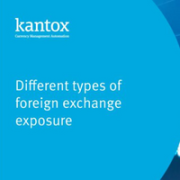What should you know about SWIFT system transfers?
09-12-2021 | Xe | treasuryXL | LinkedIn |
The SWIFT network is well-known and used by banks around the world, but it may not be the best channel for you to send your money transfers through.

The Society for Worldwide InterbankFinancial Telecommunication (SWIFT) network, which was founded in Belgium in 1973, handles about half of the world’s cross-border fund transfers. As international commerce has grown, the SWIFT network has grown commensurately. It handled about 2.5 million daily transactions in 1995 and more than ten times that many in 2015.
But SWIFT is not a bank. It does not even touch the money which passes along its network. Instead, SWIFT sends payment orders to correspondent accounts at member banks. As such, SWIFT is strictly a bank-to-bank transfer service.
If you’re sending a money transfer with a bank, you’ll become acquainted with the SWIFT system. But is it the best channel to send your money through? We’re not so sure.
What does the SWIFT system mean for you and your money transfers?
-
Added fees. In order to be members and transfer through the SWIFT system, banks are charged SWIFT fees. To counter this, both the recipient and the correspondent bank usually add fees to SWIFT transfers. Somebody, either the sender or the recipient or a combination of both, must pay them.
-
Bad exchange rates. There are some hidden currency transfer costs, at least in most cases. Currency exchange rates vary in different markets and at different times. Banks routinely choose the worst possible currency exchange rate. Then, they quickly move the money to another marketplace and pocket the difference.
-
Long transfer times. As mentioned above, SWIFT completes “most” of its transactions within thirty minutes. In this case, “most” means about half. Some transactions could take several days to process. Other delays, such as large transfer amounts or first-time users, could delay the process even more.
How does the SWIFT network work?
Today, SWIFT connects about 10,000 financial institutions in about 200 countries. That sounds sweeping and impressive. But most of its transfers go through fewer than two hundred banks, brokers, clearinghouses, and corporations.
Furthermore, SWIFT is the industry standard for linguistics and code, even for non-SWIFT institutions like Xe. SWIFT works with various international organizations to set content and format standards for messages and transactions. In other words, the network infrastructure usually handles codes as opposed to account numbers and other sensitive information. That’s one reason SWIFT is so secure.
Another reason the network is secure is that its three data centers in the United States, Switzerland, and the Netherlands communicate with each other via subterranean or submerged cables. These communications channels are difficult to hack.
SWIFT upgraded its network infrastructure in 2001 and again in 2008. Not coincidentally, 2008 was also the year international funds transfer prices went up significantly. As part of the upgrade, SWIFT required all member institutions to replace their bilateral key exchange encryption hardware with a Relationship Management Application. Member banks gladly passed these costs along to consumers.
How secure is the SWIFT system?
2008 was a long time ago in technological terms. The smartphone you had back then, assuming you had one, probably looked like one of those World War I field telephones compared to the one you have now. Yet 2008 was also the last time SWIFT did any major security upgrades.
The network paid the price in April 2016. Hackers used malware to steal about $81 million from the central bank in Bangladesh. The malware intercepted the supposedly unbreakable SWIFT codes and also covered the hacker’s tracks. Perhaps most disturbingly, SWIFT admitted that these thieves, or ones similarly equipped, had tried this before.
A few months later, an Ecuadorian bank sued Wells Fargo after the latter allegedly honored a $12 million fraudulent transfer. Hackers obtained canceled transaction requests, altered the amounts, and submitted them.
Questions continue about the network’s security. Some banks claimed they have lost money to hackers in much the same way. These allegations are under investigation.
Can you make money transfers without using the SWIFT system?
Yes, you can! Many banks and providers utilize the SWIFT system to send their money transfers due to its security, efficiency, and well-established reputation, but some providers instead opt to use other channels (or even create their own channels) to send money transfers.
Do you want an example of one such provider? Well, now that you mention it…
Sending money with Xe
SWIFT might be the largest international funds transfer platform in the world. But in terms of security, efficiency, privacy, and a few other areas, it falls short.
So, if you need a reliable and affordable way to send money overseas to family or friends, give Xe a try. We send money through our own money transfer channels, which means that we aren’t on the hook for additional SWIFT system fees and delays—and neither are you.
But don’t worry: our channels are still completely secure. We adhere to regulatory standards in every country that we do business in, with bank-grade security measures to ensure that your money and information are completely safe












